 |
 |
 |
| |
Longitudinal Trends in HIV Non-Occupational Post-Exposure Prophylaxis (NPEP) at a Boston Community Health Center Between 1997 and 2013
|
| |
| |
"Many patients in this study demonstrated ongoing high-risk behavior, as manifested by recurrent NPEP and a high HIV incidence. Simpler and better-tolerated regimens are needed to optimize regimen completion. NPEP recipients may benefit from early HIV risk-reduction counseling and pre-exposure prophylaxis"
Reported by Jules Levin
IDSA 2014 Oct 8-12 Philadelphia, PA
Sachin Jain, MD MPH1,2,4, Catherine E. Oldenburg, MPH2,3, Matthew J. Mimiaga, MPH, ScD2,3,4,5, Kenneth H. Mayer, MD1,2,4
1Beth Israel Deaconess Medical Center, Division of Infectious Diseases, Boston, United States,2The Fenway Institute, Boston, United States,3Harvard School of Public Health, Department of Epidemiology, Boston, United States,4Harvard Medical School, Boston, United States, 5Massachusetts General Hospital, Department of Psychiatry, Boston, United States
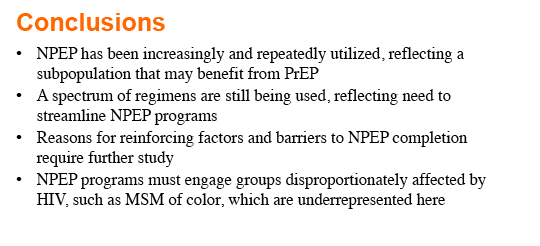
Program abstract:
Background: Although guidelines have recommended HIV non-occupational post-exposure prophylaxis (NPEP) for potentially HIV-exposed individuals for more than 15 years, there have been scant behavioral and clinical outcome data that reflect changes in management over that interval. Here, we assess secular trends among NPEP users presenting at one US center over the past 16 years.
Methods: A retrospective longitudinal study of electronic medical records of NPEP recipients between July, 1997 and August, 2013 was performed at a large community health center in Boston. Eligible participants were age ≥18 years, HIV-uninfected, and had sexual or non-occupational intravenous needle exposures. Logistic generalized estimating equation models were used to assess trends in NPEP prescriptions and factors associated with regimen completion.
Results: Data from 894 NPEP patients' charts were analyzed. Almost all patients were male (92.4%), 5.9% female, 1.7% transgender/genderqueer, and 88.1% men who have sex with men. Most patients (71.5%) were Caucasian, 10.9% Latino/Hispanic, and 7.1% African-American. The mean age was 33.9 years. NPEP use increased over time and increasingly entailed Tenofovir instead of Zidovidine-based regimens (P<0.001); 19.3% had ≥2 NPEP visits. Of 1244 NPEP visits, exposures included: 92.7% consensual sex, 5.3% nonconsensual sex, and 1.1% intravenous needle exposure. Regimen completion was documented for 37.2%, non-completion in 6.2%, and unknown in 56.6% of visits. A known HIV-infected partner (AOR 2.00, 95%CI:1.11-3.60) and Tenofovir-based regimen (AOR 2.60, 95% CI:1.49-4.53) were associated with increased odds of completion. Three-drug regimens (AOR 0.44, 95% CI:0.25-0.77) were associated with decreased odds of completion compared to two-drug regimens. HIV incidence was 2.1 per 100 person-years (95%CI:1.5-2.9).
Conclusion: Many patients in this study demonstrated ongoing high-risk behavior, as manifested by recurrent NPEP and a high HIV incidence. Simpler and better-tolerated regimens are needed to optimize regimen completion. NPEP recipients may benefit from early HIV risk-reduction counseling and pre-exposure prophylaxis.
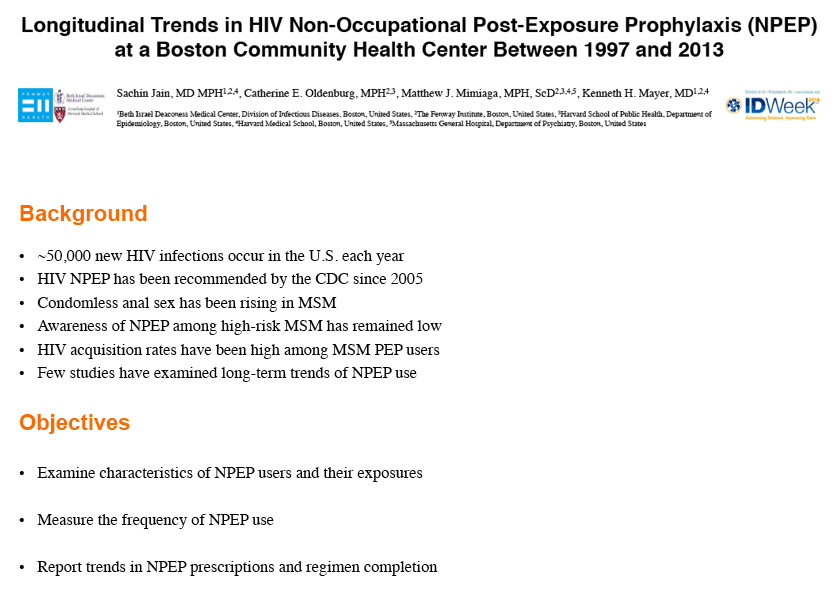
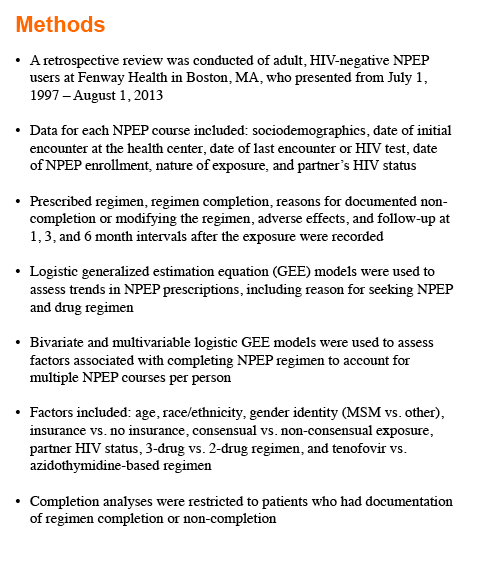
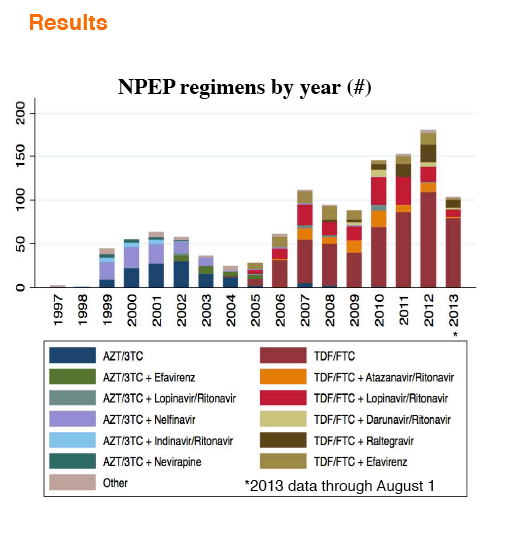
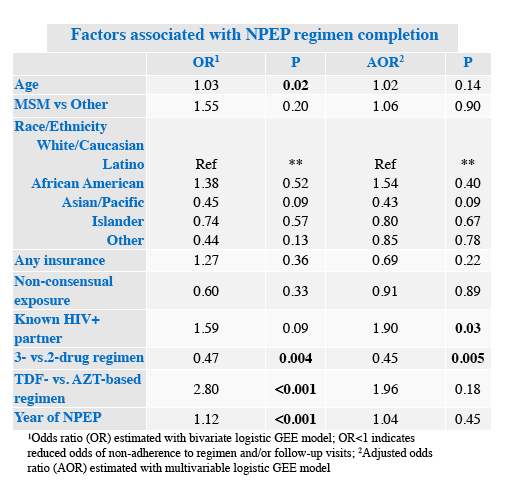
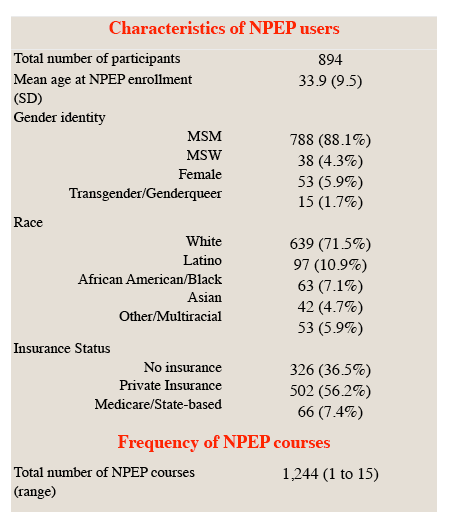
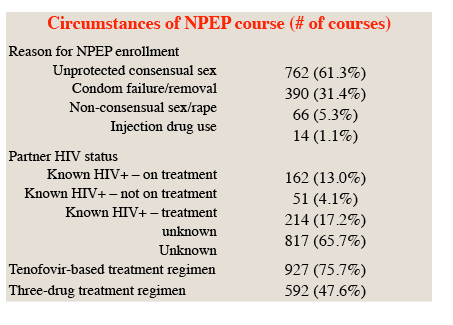
|
| |
|
 |
 |
|
|